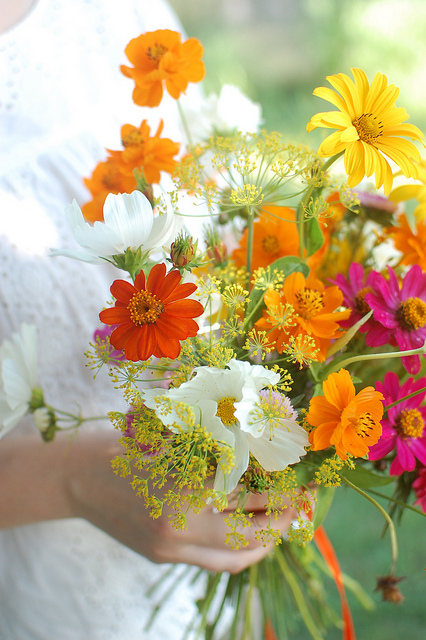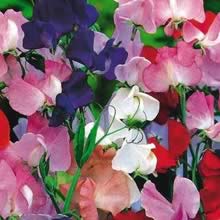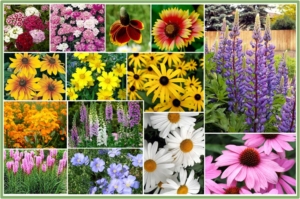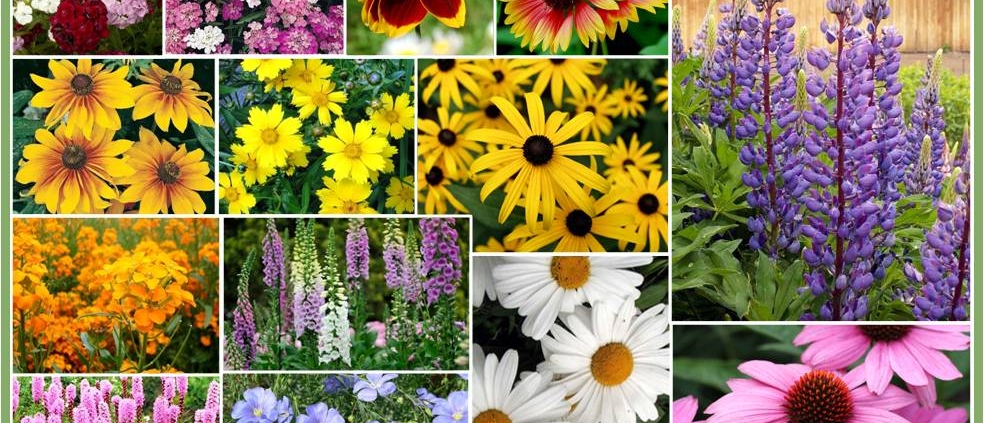For The Love Of Flowers, Start A Cutting Garden
By Faye
 Most of us want to bring the beauty and fragrance of flowers into our homes, but worry about plundering the garden beds by cutting off blooms. The solution? Plant a cutting garden! It needn’t be large but, if well planned, will reward you with glorious bouquets all season long. A few guidelines and suggestions to help you get started.
Most of us want to bring the beauty and fragrance of flowers into our homes, but worry about plundering the garden beds by cutting off blooms. The solution? Plant a cutting garden! It needn’t be large but, if well planned, will reward you with glorious bouquets all season long. A few guidelines and suggestions to help you get started.
LOCATION:
Site your cutting bed away from your main garden beds; it can be tucked behind the shed, against the garage, or even in the vegetable garden. It should be in a sunny spot, out of the wind, with good drainage and fertile soil amended with lots of compost, leaves, and slow-release fertilizer. If you haven’t gardened in this spot before, dig down deeply and add the amendments to the root zone.
DESIGN:
Plant in rows or blocks, with the taller plants on the northernmost side so as not to shade the shorter plants. Some plants that require staking, like dahlias or delphiniums, are easier to stake when planted in well-spaced rows, and because this isn’t an ornamental bed, utilitarian staking isn’t a problem.
WHAT TO PLANT:
There are only 3 main guidelines for this, and they are simple; grow what you love to have inside the house or give to friends, grow plants that produce attractive foliage or many flowers over a long period, and generally look for plants with long flower stems. Pansies are sweet and they bloom early, but their short stems give them limited use for arrangements.
Both annuals and perennials have a place in a cutting garden. Perennials will bloom over a shorter period, but they are reliable and will be there again next year. Annuals will keep on flowering until their season ends; keep the flowers cut, or deadhead any fading blooms to frustrate the plant’s need to create a seed, thereby forcing it to bloom again.
There are so many choices for excellent cutting flowers, but these plants get my vote for ease of care and reliable bloom over a long time:
 Annuals: Often started from seed, so they are inexpensive to experiment with. Try one new thing each year, just for fun!
Annuals: Often started from seed, so they are inexpensive to experiment with. Try one new thing each year, just for fun!
- Sweet peas are easy, early, and we usually have lots of seedlings at the nursery.
- Cosmos bloom prolifically over a long season
- Calendula make cozy bouquets, and are also lovely in salads as the petals are edible.
- Stocks provide an aromatic delight, soft pastel colours, and interesting texture.
- Snapdragons can be stunning in arrangements, and often become perennial if they make it through the first winter. Many interesting varieties are now available from seed.
- Sunflowers; now many shorter, more colourful varieties to grow from seed.
- Dill, while an herb, has beautiful foliage and the flowers are delicate umbels which add an airy texture to floral displays. Best if grown from seed.
- Heliotrope has the most delicate scent. Dark purple adds that touch of drama.
- Salpiglossis is a seldom seen annual that is truly worth a try; seems to be aphid-resistant, mildew resistant, and the flowers are stunning. Yes, we have seeds.
- Asters come in a wide variety of shapes and often display gorgeous jewel tones of rich pink, purple and fuchsia.
- Zinnia is probably the most floriferous and rewarding flower for cutting. One friend said “I don’t ever want to be without zinnias” after trying them the first time. We will have seedlings of my very favourite seed mix ‘Granny’s Bouquet’.
 Perennials
Perennials
- Echinacea is famous as Purple Coneflower but now comes in a wider array of brilliant colours. Seed pods are also pretty in arrangements, but wait until the end of the season to let too many of the flowers go to seed, or you’ll hamper flower production.
- Rudbeckia, or Black-Eyed Susan, are late-blooming in many shades of yellow to bronze to burnished orange.
- Physalis aka Chinese Lanterns are unmatched for autumn arrangements and even sprayed with gold for Christmas décor.
- Aquilegia, often two-toned; columbines are a favourite in spring and early summer. Can self-seed prolifically.
- Alstromeria is a very long-lasting cut flower. Can be invasive, so check variety or plant accordingly.
- Delphinium is tall, rich, and handsome.
- Aconitum or monkshood can be grown in partial shade, and stunning dark blue is natural for a dramatic floral display in late summer.
- Lupines provide height and texture in a wide array of colours.
- Foxgloves self-seed so you may have them beyond the cutting garden, but are beautiful with their height and fascinating interior colourations.
- Gaillardia are daisy-like gems of gold, orange and bronze.
- Dahlias can provide the most amazing flowers; colours that defy belief, and sizes in a range from golf balls to dinner plates. Plant in rows with strong stakes.
Whether or not you have space for a designated cutting garden, try some of these beauties combined with grasses, hosta leaves, and greens from your shrubs and other foliage plants, to give pleasure to yourself or those you love. Flowers make people happy.

